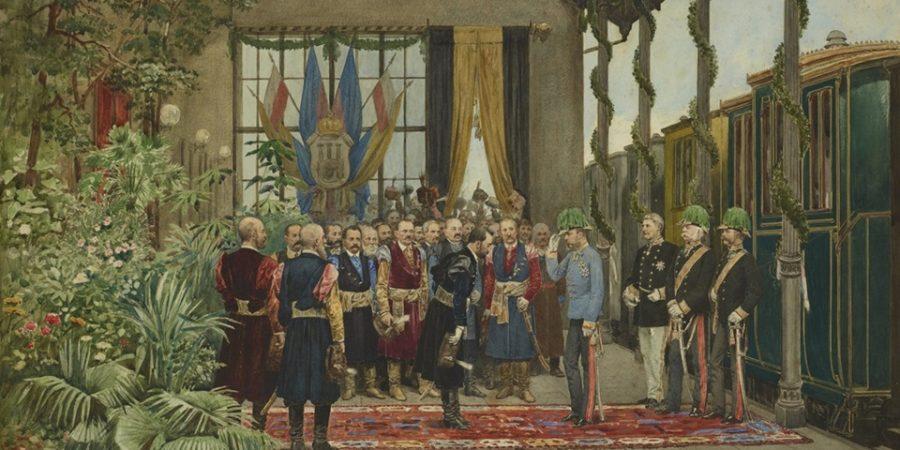In 1880, the then 50-year-old Emperor of Austria, Franz Joseph I, undertook a journey during which he visited the area of two crown lands: Galicia (including the Grand Duchy of Kraków) and Bukovina.
The emperor traveled by train, mainly on the lines of the Karl Ludwig Railway and the Galician Transversal Railway. During the journey, the emperor was primarily supposed to inspect the line itself, as well as the stops and stations, without getting off the train. Previously, it was ordered to renovate the stations and buildings along the planned route. For the emperor’s arrival, both the surroundings of the stations and the bridges over the Vistula, Dunajec, and San rivers were decorated. The emperor’s train passed through temporarily created triumphal arches, which were also prepared on the streets of Kraków and Lviv (Lemberg/Lwów), where Franz Joseph I stayed for a few days.
The emperor traveled in a royal train, consisting of two locomotives and several dozen carriages. Ahead of the royal train, a reconnaissance train passed one station earlier. The royal train was provided by the Northern Railway of Emperor Ferdinand and was lavishly equipped. At its front was a safety carriage, followed by a service carriage. The train also included dining and kitchen carriages. The compartments in the royal train were lit by gas, and all the compartments were heated with hot water. The carriages of the train were connected by covered bridges and were linked by telegraph.
During the journey, the emperor used a special imperial carriage, prepared specifically by the Karl Ludwig Railway. It was constructed on three axles to reduce vibrations. Its exterior surface was painted green with golden borders and decorated with the emblems of the Austro-Hungarian Empire. At the front of the carriage was a compartment for the personal attendant, followed by a spacious imperial salon, which included an ottoman, a sleeping chair, three chairs, a desk, a clock, a mirror, and smaller furnishings. The walls were covered with damask and carvings, Persian carpets were laid on the floor, and the double windows had blinds. Behind the imperial salon, there was an adjutant’s compartment and a toilet compartment.
Paintings from the series “Emperor Franz Joseph I’s Inspection Tour of Galicia in September 1880”
A series of paintings were created by various artists depicting the emperor’s journey.
“The Emperor’s welcome at the railway station in Lviv,” by Antoni Kozakiewicz, 1881
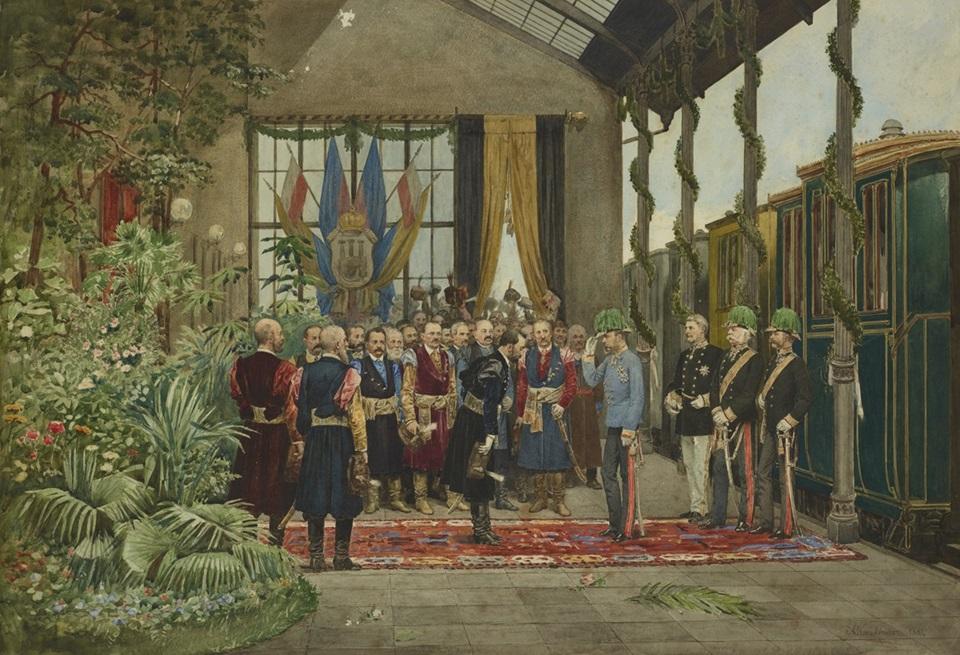
“The Emperor at a ball in the town hall of Lviv,” by Juliusz Kossak, 1881
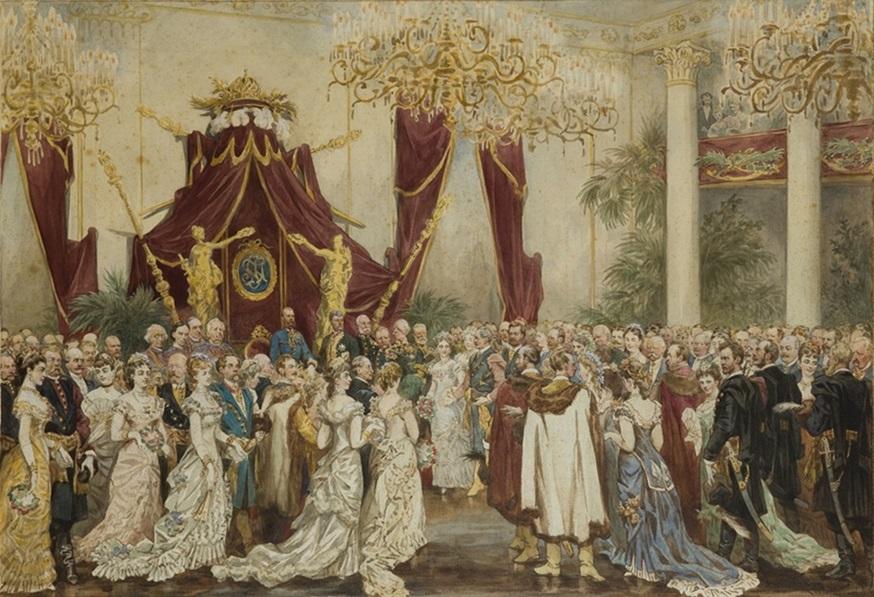
“The Emperor’s visit to the Provincial Sejm Building in Lviv,” by Henryk Rodakowski, 1881
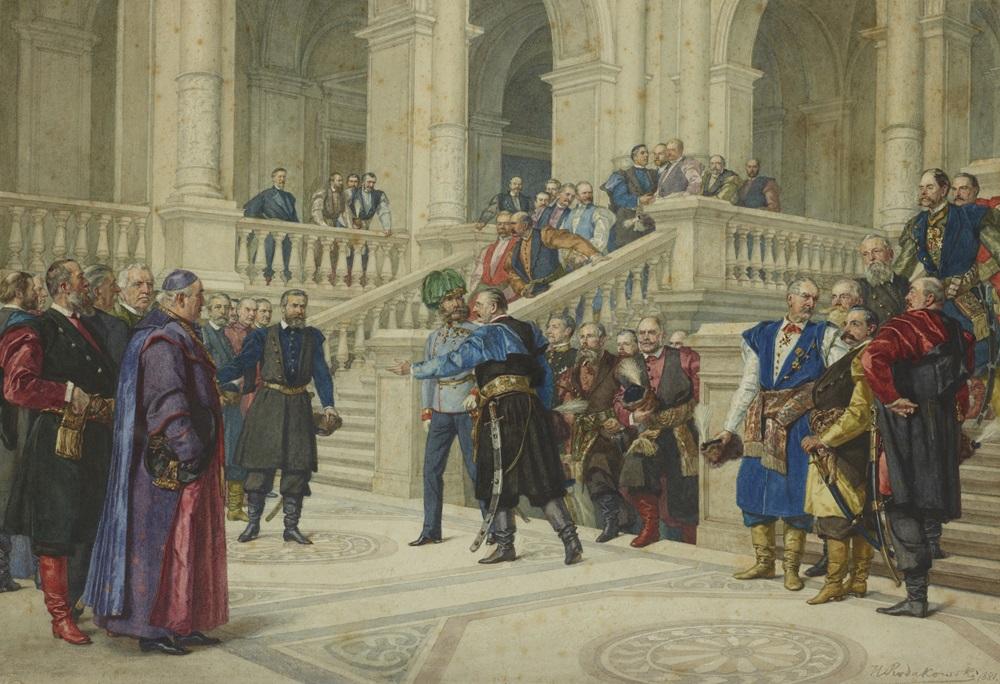
“The Emperor receives delegations from Polish and Ukrainian communities in Lviv,” by Franciszek Tepa, 1881

“Greeting the Emperor in Front of St. George’s Cathedral in Lviv,” by Antoni Kozakiewicz, 1881

“The Emperor visits the National School of Forestry in Lviv,” by Andrzej Bronisław Grabowski, 1881
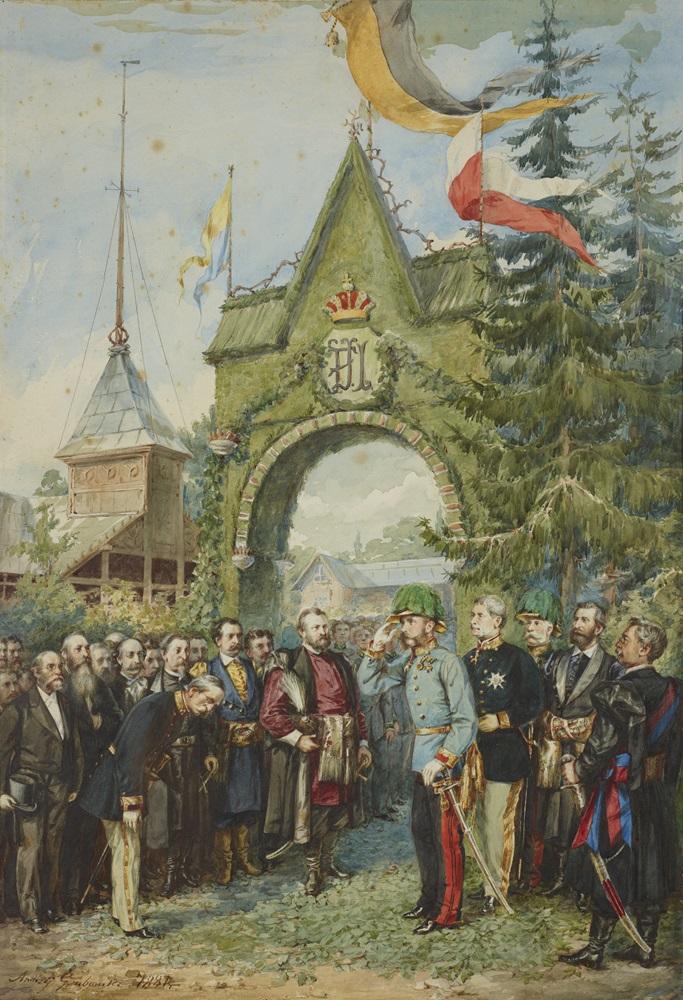
“A Hutsul Wedding Procession before the Emperor in Kołomyia,” by Tadeusz Rybkowski, 1881
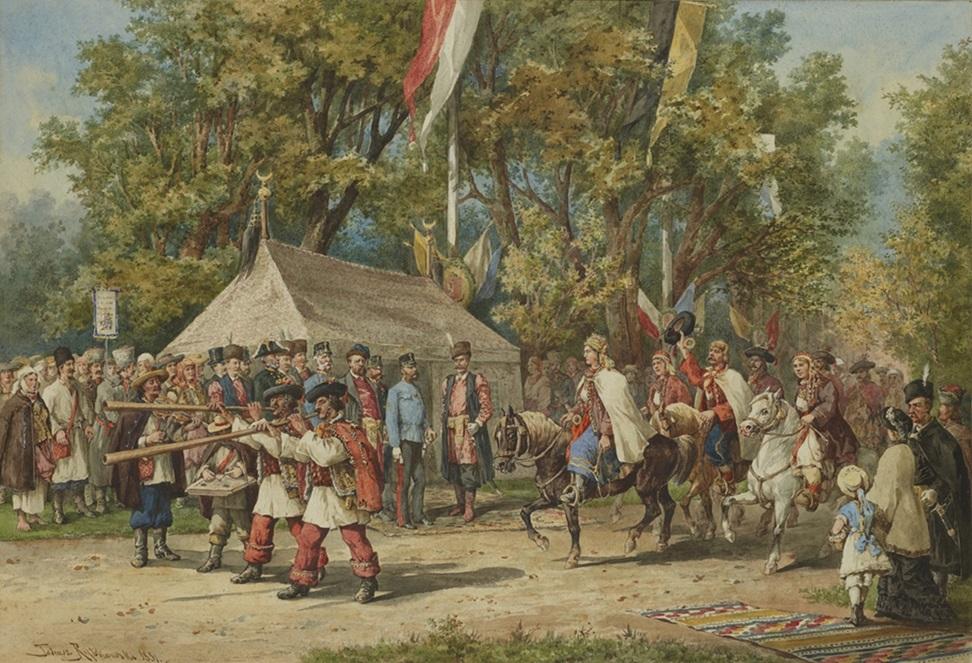
“The Emperor visits the oil fields in Boryslav,” by Wojciech Grabowski, 1881
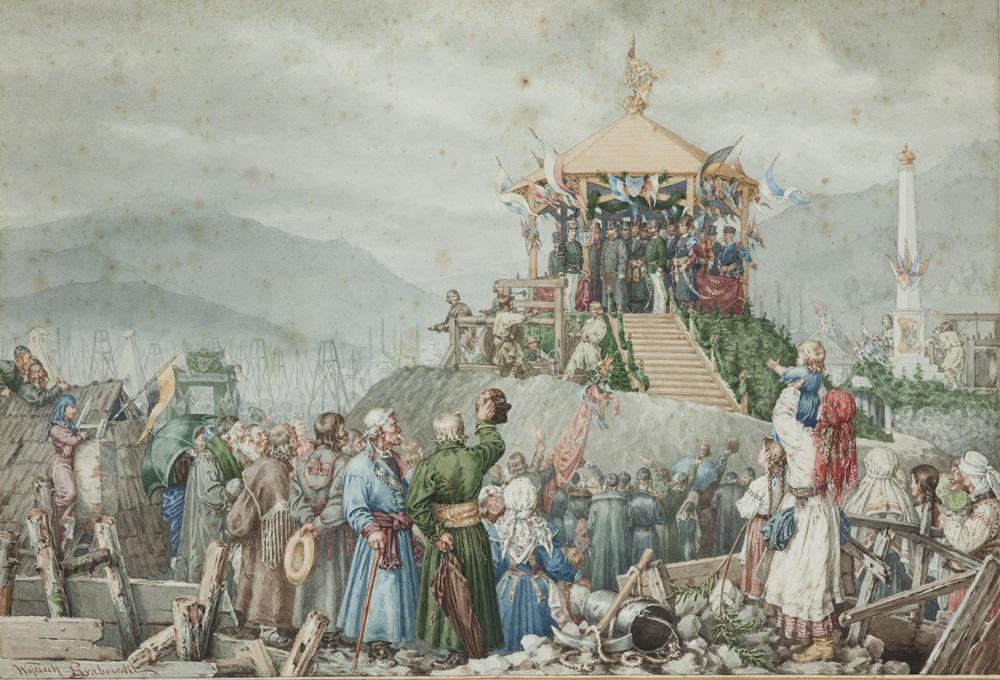
“The Emperor’s entry into Kraków,” by Juliusz Kossak, 1881
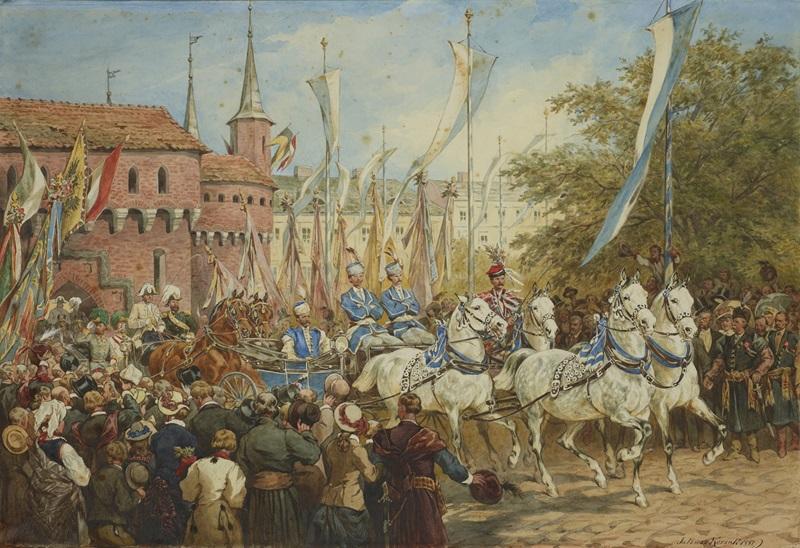
“Harvest festival procession of the Kraków people in the Main Market Square in Kraków,” by Tadeusz Ajdukiewicz, 1881

“The Emperor in the courtyard of the Royal Castle on Wawel,” by Tadeusz Ajdukiewicz, 1881
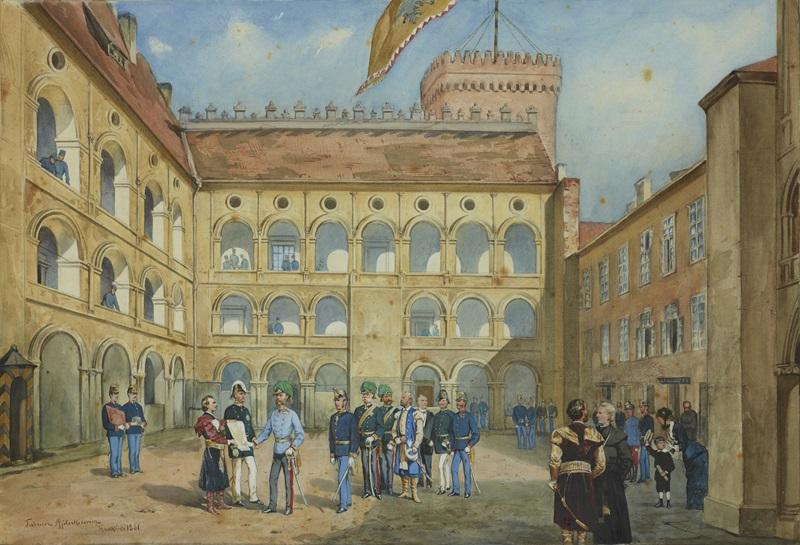
“The Kraków Wedding Parade passes before the Emperor in the Main Market Square in Kraków,” by Juliusz Kossak
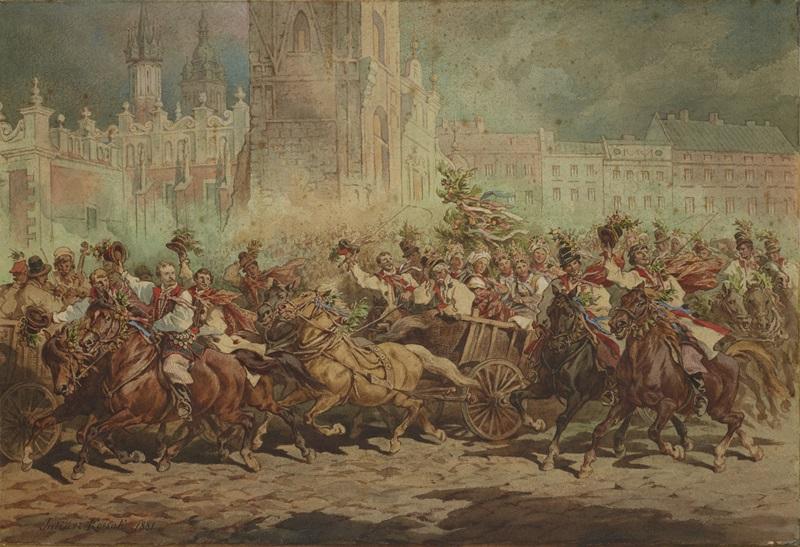
“The Emperor receiving a petition during a carriage ride through the city,” by Wojciech Kossak, 1881
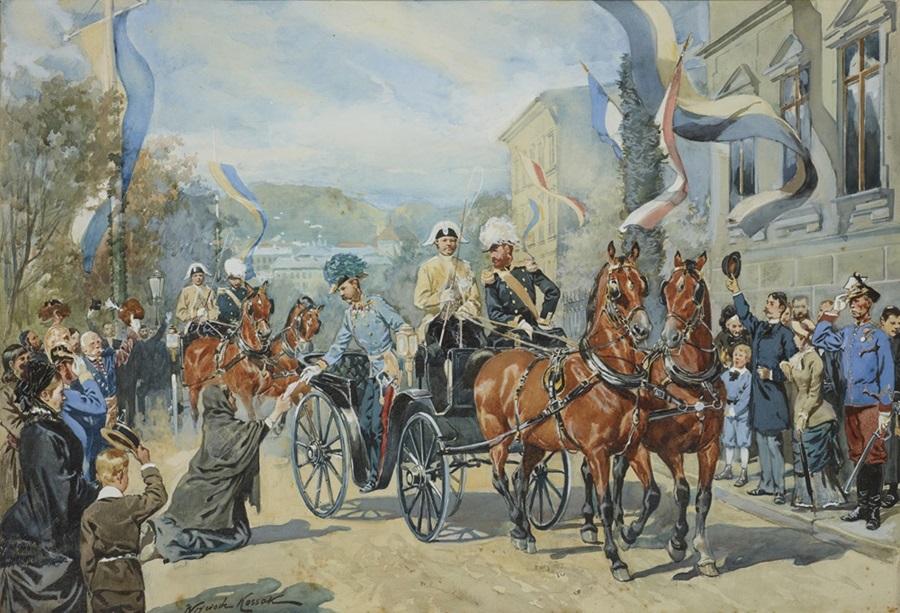
“The Emperor at the Orphanage and Poorhouse in Drohowyż,” by Aleksander Raczyński, 1881
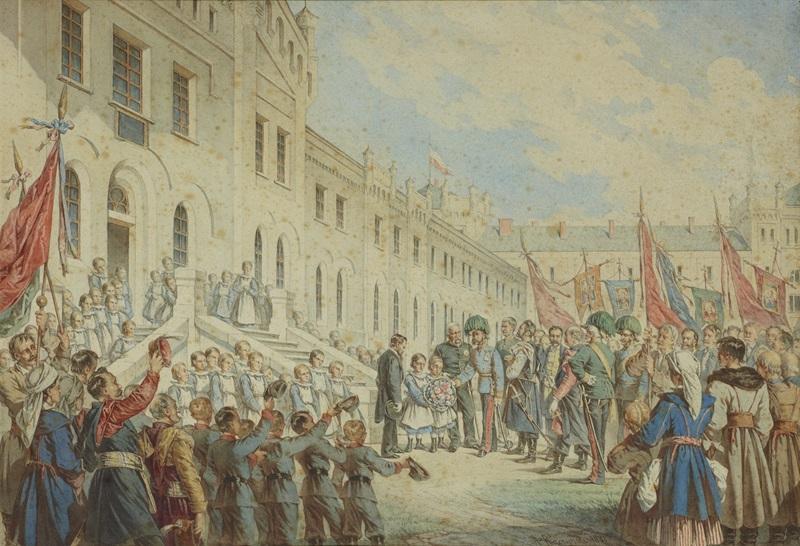
“Farewell to the Emperor in Łupków,” by Wojciech Kossak, 1881
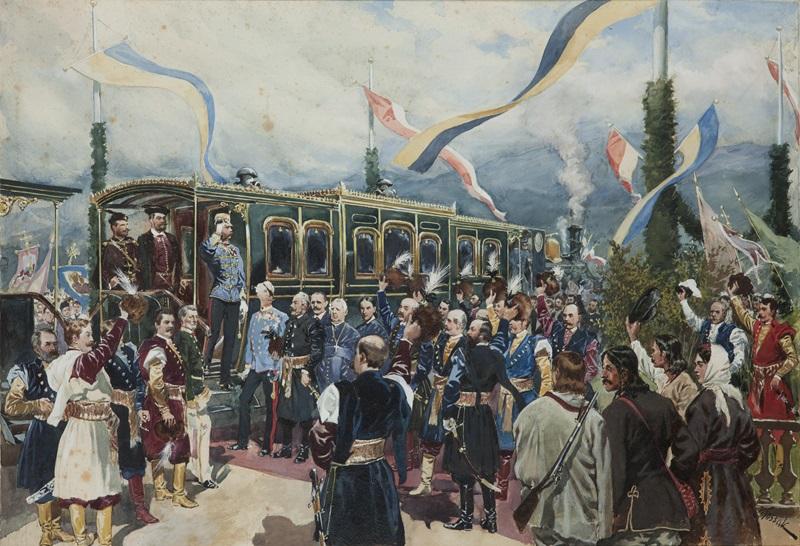
“The Krysowice community thanks the Emperor for donating funds for the construction of a school,” by Juliusz Kossak, 1881
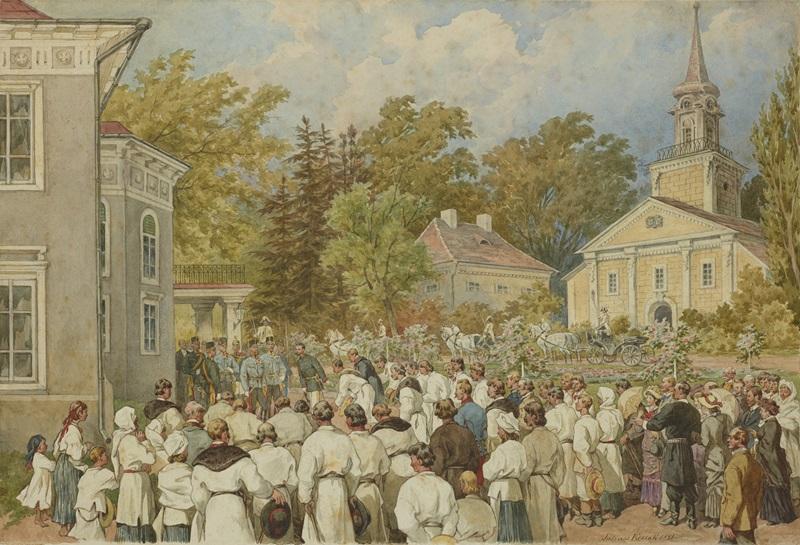
Sources:
Text: Podróż Franciszka Józefa I po Galicji i Bukowinie (1880)
Images: MNK

